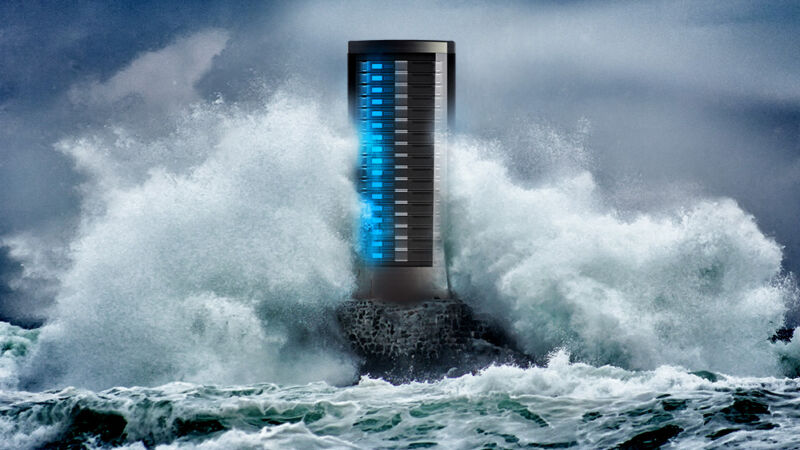Meet The Windows Servers That Have Been Fueling Massive DDoSes For Months

A small retail business in North Africa, a North American telecommunications provider, and two separate religious organizations: What do they have in common? They’re all running poorly configured Microsoft servers that for months or years have been spraying the Internet with gigabytes-per-second of junk data in distributed-denial-of-service attacks designed to disrupt or completely take down websites and services.
In all, recently published research from Black Lotus Labs, the research arm of networking and application technology company Lumen, identified more than 12,000 servers—all running Microsoft domain controllers hosting the company’s Active Directory services—that were regularly used to magnify the size of distributed-denial-of-service attacks, or DDoSes.
A never-ending arms race
For decades, DDoSers have battled with defenders in a never-ending arms race. Early on, DDoSers simply corralled ever-larger numbers of Internet-connected devices into botnets and then used them to simultaneously send a target more data than it could handle. Targets—be they games, new sites, or even crucial pillars of Internet infrastructure—often buckled at the strain and either completely fell over or slowed to a trickle.
Companies like Lumen, Netscout, Cloudflare, and Akamai then countered with defenses that filtered out the junk traffic, allowing their customers to withstand the torrents. DDoSers responded by rolling out new types of attacks that temporarily stymied those defenses. The race continues to play out.
One of the chief methods DDoSers use to gain the upper hand is known as reflection. Rather than sending the torrent of junk traffic to the target directly, DDoSers send network requests to one or more third parties. By choosing third parties with known misconfigurations in their networks and spoofing the requests to give the appearance that they were sent by the target, the third parties end up reflecting the data at the target, often in sizes that are tens, hundreds, or even thousands of times bigger than the original payload.
Some of the better-known reflectors are misconfigured servers running services such as open DNS resolvers, the network time protocol, Memcached for database caching, and the WS-Discovery protocol found in Internet of Things devices. Also known as amplification attacks, these reflection techniques allow record-breaking DDoSes to be delivered by the tiniest of botnets.
When domain controllers attack
Over the past year, a growing source of reflection attacks has been the Connectionless Lightweight Directory Access Protocol. A Microsoft derivation of the industry-standard Lightweight Directory Access Protocol, CLDAP uses User Datagram Protocol packets so Windows clients can discover services for authenticating users.
“Many versions of MS Server still in operation have a CLDAP service on by default,” Chad Davis, a researcher at Black Lotus Labs, wrote in an email. “When these domain controllers are not exposed to the open Internet (which is true for the vast majority of the deployments), this UDP service is harmless. But on the open Internet, all UDP services are vulnerable to reflection.”
DDoSers have been using the protocol since at least 2017 to magnify data torrents by a factor of 56 to 70, making it among the more powerful reflectors available. When CLDAP reflection was first discovered, the number of servers exposing the service to the Internet was in the tens of thousands. After coming to public attention, the number dropped. Since 2020, however, the number has once again climbed, with a 60-percent spike in the past 12 months alone, according to Black Lotus Labs.
READ MORE HERE

